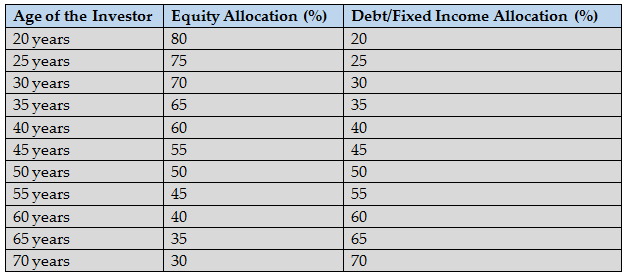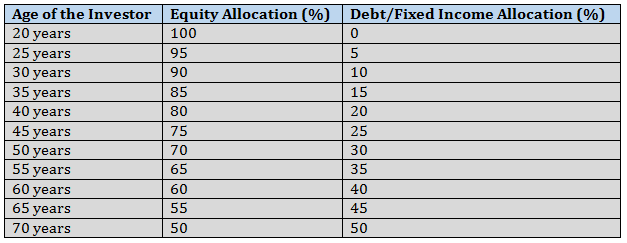The Art of Investing in Bear Markets

The stock markets have hit a recent all time low and everyone is rushing to minimize or redeem their equity related investments. However, if you think otherwise and wish to make fresh investments, you are just on the right path. Sun Tzu in “Art of War” left a pearl of wisdom in the phrase, “Avoid what is strong and attack what is weak”. The book has been contextualized for warfare. However, to apply this to the present stock market context, when the markets are strong you will have a tough times making profits. However, when the markets are weak, like the present scenario, an investment now will give you better returns when the markets start to soar. You know and so do I that they will soar because the entire stock markets are based on cyclical movements. So while you try to make the most of the markets when it is weak, what strategy should you be adhering to? If you have to attack you need a solid plan. How do you make a plan?
Making the Plan
“Know Your Enemy
And Know Yourself
And in 100 Battles
You will never be in Peril”
-Sun Tzu, ‘Art of War’
Sun Tzu wrote those words 2500 years ago. It is ancient, yet relevant. We are not talking about military warfare, just investments strategies. Investment strategies are built for your benefit. However, the only way it can benefit you, is when you know what you want. The “enemy” in the context of investments, is simply your goals. Know your goals, know the type of investor you are and you will manage to sail through all ups and downs because your investments will always come to your aid.
Divide your goals in to:
Short term goals:
Goals that you have to fulfil in 1 year or less
Investment Type:
A short term goal requires a short term investment which will yield returns. Liquid funds or ultra short term debt funds would be ideal for such a goal. If the period of investment is 1 to 3 months, then you could go for Liquid Funds. However, if you can extend the period to 6 to 12 months then ultra short term debt funds is worth exploring. Some ultra short term funds may charge an exit load for redemption within a month to three.Intermediary Goals:
Goals that you have to fulfil in 3 to 7 years
Investment Type:
If your investment horizon is 3 to 4 years then might consider exploring short term income funds or Fixed Maturity Plans. FMPs are close ended schemes and aim to generate income within the short to medium term. If liquidity is not a problem before the fixed term expires, then FMP makes a good investment choice. It also receives indexation benefits after three years and the returns could be higher than fixed deposits. If you are looking for liquidity within a fixed period of time, open ended schemes among income funds could also serve your investment needs.
If your investment horizon is five to seven years then diversified equity mutual funds are worth exploring. Equities with some debt components would also be ideal for five to seven years as it reduces volatility. And therefore, equity oriented hybrid mutual funds could be a good bet for moderate risk takers. Large cap funds and Mid Cap equity Funds could also be suitable for this horizon provided your risk taking appetite matches the objectives of these funds.Long term goals:
Goals that you have to fulfil in 7 to 10 years or more
Investment Type:
The options to invest in this investment horizon are endless. All categories under Equity Funds could be explored for investments. You could invest some portion even in sectoral funds as with time the volatility will reduce but these may offer higher returns as well. Mid & Small Cap, Sectoral funds, or Equity related schemes could easily serve your long term investment purpose.
- You may like to read – Planning your life goals with mutual funds.
Around 40 days are still left in this financial year and you may like to read – Mutual Fund Taxation in FY 2015-16
Equities: How Much to Invest?
Indians are risk averse by nature. We rather are comfortable with an assured 6% than risk anything for a probable 18 - 20%. We belong to a long tradition of fixed deposits, recurring deposits and post office savings. These were looked upon as investments a few decades back when the financial industry was still evolving. Share markets were looked down upon for gamblers and risk takers and best ignored by common investors.
However, with evolving times, the instruments to invest have also evolved. The mindsets towards investments unfortunately have not. Investors are still scared by the idea of equity investments and they have to be convinced by financial advisors to take this step. The volatility of the equity markets also impacts the equities adversely because investors become more wary towards it. The same scenario is being played out and investors are looking for a way out. Here are two classic asset allocation rules which determines how much to invest in equities depending upon your age and needs.
The Rule of 100
This is a simple rule to ascertain the allocation to equities depending upon your age. To figure out how much equity allocation is suitable for you, simply subtract “100 - your age”. The answer is your percentage of equity allocation. If your current age is 30 then your asset allocation is (100 - 30) i.e. 70% allocation to equities. And for a 60 year old the allocation to equity is 40% of his assets (100 – 60). This is a conventional model of asset allocation and usually used by risk averse and passive investors.

The Rule of 120
This rule determines the allocation of assets on the fact that humans live longer now due to better medical care and health facilities. Hence, this is an aggressive approach to investments because the allocation in equities will be slightly higher. Here the age of the investor is subtracted from 120. Hence, if current age is 30 years the allocation in equities will be 120 - 30 i.e. 90%. If you are a 60 year old investor your allocation will be 60% which is higher compared to the traditional model where the allocation is 40% only!

Conclusion
We are moving through tough times. It does not matter what the current times are because your future financial needs are not going to change because of the present tough times. No matter how bad it gets, you still have to stay invested. Staying invested in bear markets is perhaps toughest on part of the investors, watching their money take a fall and so on. During these times, the knowledge that the money that is falling now is also capable of rising is what has to get you going. The silver lining of this scenario is, there is no better time to invest than bear market. Hence, if you have been weighing the options of investments, now would be a great time to act! This is what ‘Art of War”, err “ Art of Investing” is!!
RECOMMENDED READS
LATEST ARTICLES
- Why you need to have hybrid mutual funds in your portfolio: Different types of funds Part 2
- Why you need to have hybrid mutual funds in your portfolio: Misconceptions Part 1
- Which is the best time to invest in mutual funds
- Economic slowdown: Is it real and what should you do
- Importance of liquidity in investing: Mutual funds are ideal solutions
An Investor Education Initiative by ICICI Prudential Mutual Fund to help you make informed investment decisions.
Quick Links
Follow ICICI Pru MF
More About ICICI Pru MF
POST A QUERY




